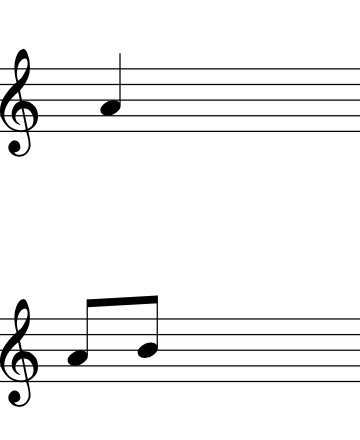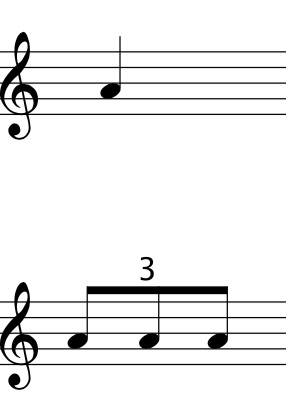
In the first three blogs, we introduced long tones, intervals and scales. Have you grasped the key points of these knowledge? If you have any doubts about the scale practice or want to learn more practice methods, we will continue to answer them in the future blog. If you want to know more about learning, please continue to follow our blog and subscribe to our newsletter, and don't miss our every share.
Do you feel boring when you perform long tone exercises, interval exercises or playing notes for a long time? In addition to the contrast of notes, do you want to know more about ways to enhance the emotional color of music? Today, Six Months Rebellion will share a method that can enhance the "charm" of saxophone – trill. If you add the longer pointed notes to the trill technique when you practice basic skills, I believe your performance will become more beautiful.

Trill:
Trill is a very common performance skill of saxophone, and it is also a skill that is easy to master. However, this technique needs to be practiced. If you can master it skillfully, you can use it as you like and express your playing mood at any time. On the contrary, if you can't master this skill, it will make the music very stiff. Therefore, the only way to improve our performance level is to practice!
Type of saxophone trill:
So far, saxophone's trill skills can be divided into four categories: jaw type trill skills, lip type trill skills, throat type trill skills and diaphragm type trill skills. In today's blog, we will introduce the common lip tremolo techniques and diaphragm trill techniques, and provide you with detailed practice methods.
Lip trill technique:
Lip trill is a tremolo technique produced by controlling the lip muscles to exert force on the reed. We only need to control the lips to play this technique well. Usually, this technique can be used to play tremolos with large amplitude, and it is also easy to master. Therefore, lip trill are also chosen by many players.

But when we play lip trill, we will inevitably pull our lips and facial muscles, so it may affect our mouth shape. In addition, this trill can easily make the timbre played very stiff, so we need to carefully choose the appropriate mouth shape when learning.
We can try to play the long tone of saxophone together, and deliberately use the lower lip to continuously exert different strength on the reed. Can you feel the timbre change at this moment?
Abdominal trill:
Abdominal trill, also known as diaphragm tremolo, is a tremolo technique that relies on the movement of abdominal muscles to exert different pressures on the diaphragm to change the size of air output. In fact, this tremolo is often used by other woodwind instruments and brass players, but it is not easy to control this technique when playing saxophone.

Now we can try to have a good laugh. When we laugh, we can pay attention to whether there is a gap between our laughter? That is to say, we laugh like this: Ha… Ha… Ha… This is the performance of our abdominal muscles. However, the performance of the saxophone requires accurate and flexible control of the amplitude and speed of the tremolo, so it is difficult for us to use this technique flexibly.
How to practice tremolo?
How to trill on saxophone
To make a good trill, we must first learn to control and relax our jaw. First, we need to put the mouthpiece into our mouth and make the correct mouth shape to hold the mouthpiece. We try to move the jaw up and down again, which is similar to saying the words "oh" and "so" in a quick succession. You can try to feel the change of the voice.
When we play trill, we cannot break our mouth shape in order to control the jaw. A good trill is based on the standard mouth shape. At the same time, we should ensure that every note can be played full, mellow and substantial, and we should not put too much pressure on the reed, otherwise the timbre of saxophone will become dry and unpleasant.
At the beginning of the exercise, we can also use the metronome to assist in the exercise:
Adjust the metronome to 50-60, and you can play tremolo regularly in each beat. For example, we can think of the time value of a quarter note as two eighth notes to play. Because trill is played continuously, it will not cause any performance changes. When we play more skillfully, we can play triplets, four sixteenth notes or play faster in one beat until you can master this skill.








